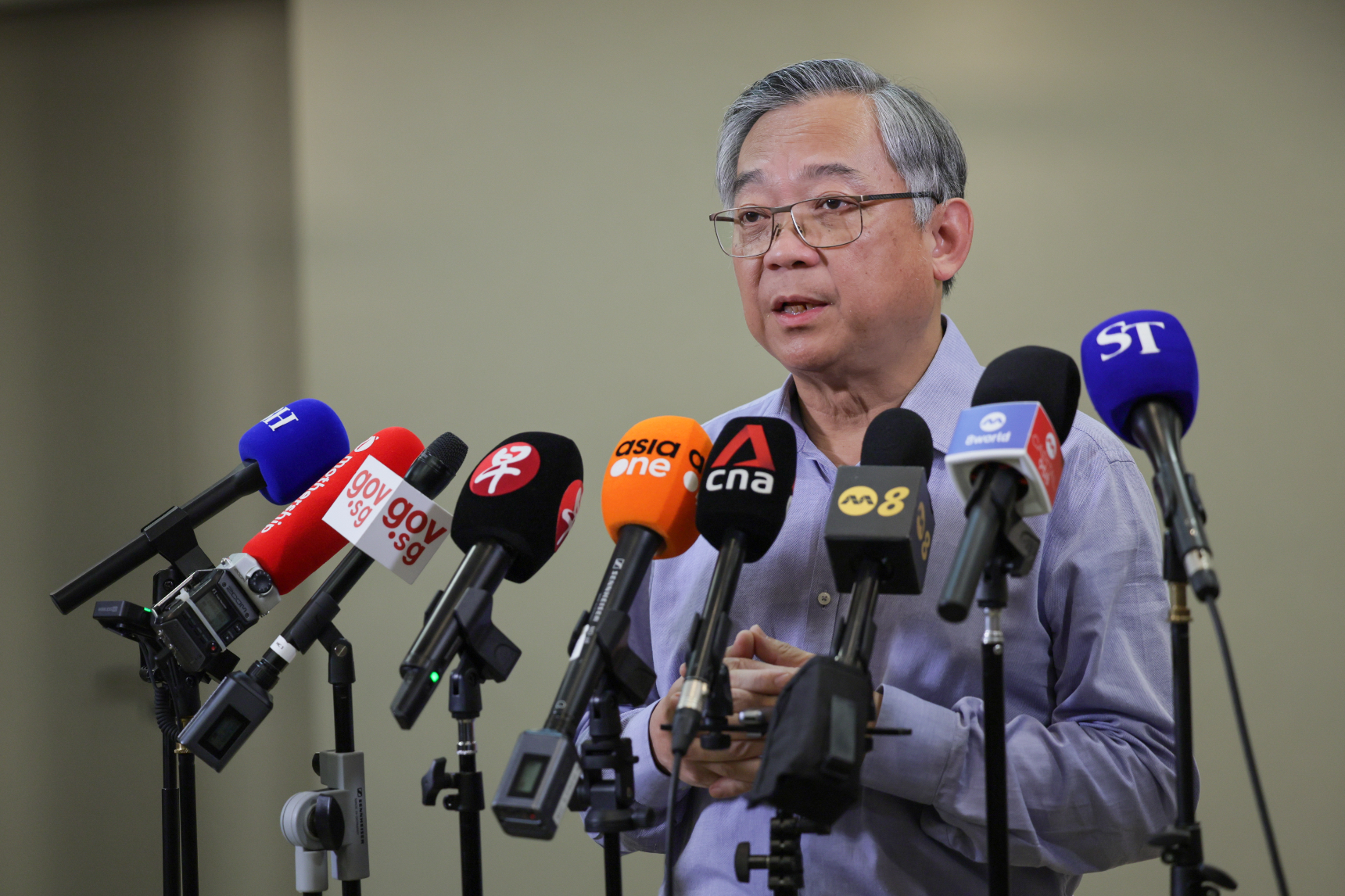
Preferential or even zero tariffs on Singapore’s pharmaceutical exports to the United States are a possible concession that has emerged in ongoing talks to navigate trade barriers recently put up by America against virtually all its trading partners.
There are also early indications that Washington is open to discussing how Singapore can ensure a continued supply of semiconductors to the US, as well as for the US to continue to supply Singapore with this technology, said Deputy Prime Minister Gan Kim Yong on May 16 at the Ministry of Digital Development and Information in Hill Street.
He was providing updates on the progress made by the Singapore Economic Resilience Taskforce (SERT), which he chairs, with the latest meeting held the previous week.
As there are zero tariffs for what Singapore imports from the US, Washington is instead looking at Singapore to ensure a smoother flow of goods as well as secure its supply chains, said DPM Gan, who is also Minister for Trade and Industry.
At the same time, Singapore is deepening ties with like-minded trading partners, such as its fellow Asean member states.
One avenue will be the upgrading of the Asean Trade in Goods Agreement (Atiga), which has been in force since 2010.
“We are aiming to complete the negotiations by (the) end of this month, and this is an upgrade to the trade in goods agreement, which is basically a free trade agreement, to further lower tariffs and to remove non-tariff barriers so that we can facilitate trade among Asean members.
“This signals Asean members’ commitment to deepen our integration and to strengthen our cooperation among our members,” DPM Gan said.
The minister, who is chairing the latest negotiations to upgrade Atiga, added that under the agreement, tariffs are very low, if not zero, for most countries.
Still, there remains room to reduce non-tariff barriers by improving legacy systems such as Customs clearance processes, as well as standardising paperwork.
Asean has also discussed the possibility of strengthening partnerships with other regional groupings such as the European Union and the Gulf Cooperation Council, DPM Gan added.
“This will allow us to open up more markets for our exports and, at the same time, also open up more sources of supply to strengthen our supply chain resilience.”
This comes on the back of a special meeting of Asean economic ministers convened on April 10, after the Trump administration revealed its tariff plans on April 2.
Elaborating on the sectoral tariffs, DPM Gan said the US has also expressed an openness to discussing what Singapore could do to secure concessions on pharmaceutical tariffs, “even to the extent of zero tariff for pharmaceutical exports to the US”.
“They want to make sure that with this tariff they are able to secure the supply chain for pharmaceutical supplies.”
He added that pharmaceutical exports form a key part of Singapore’s exports to the US and that the Government is looking forward to discussing how these conditions can be met, but cautioned that the process would be a “fairly long journey” as specifics need to be discussed.
As for semiconductors, DPM Gan said the US remains keen to see how it can continue to supply Singapore with semiconductor technology to support the Republic’s digital economy, semiconductor industries and various critical industries here.
The US has not announced details of tariffs on pharmaceutical products or semiconductors but had earlier said it intends to do so.
SERT was announced by Prime Minister Lawrence Wong on April 8, after the Trump administration unilaterally imposed a 10 per cent baseline tariff on most Singapore goods entering the US from April 5.
America’s litany of tariffs sparked a tariff war, notably between the US and China, when the latter retaliated by raising tariffs on US goods. Though global markets heaved a sigh of relief after both nations called a 90-day truce on May 12, the uncertain trade outlook is expected to weigh on jobs and economic growth here.
Although Singapore reported on May 16 that key exports grew at a faster-than-expected pace of 12.4 per cent year on year in April, analysts noted that this was driven by the front-loading of shipments amid tariff reprieves.
DPM Gan said the trade performance is “really no consolation” and a reflection of the uncertainty that remains for businesses.
Even though Singapore is able to sell more ahead of time, exports and production can be expected to slow down when export destinations have already stockpiled those items, he said, adding that businesses may also incur storage costs if the tariffs get further deferred or cancelled.
“You have to understand the flow of the economic production and exports to understand the numbers, because otherwise some may get excited about our exports doing well.”
He also said the US has indicated that it is not intending to compromise on the 10 per cent “baseline tariff”, which means it is better for Singapore to discuss what else needs to be negotiated, such as sectoral tariffs.
While stopping short of providing an early economic projection, he said the withholding of investments as firms seek to wait out the prevailing uncertainty will likely cause a slowdown in both Singapore and the wider global economy.
DPM Gan also noted that he had spoken via video call with US Treasury Secretary Scott Bessent earlier in May, as well as held meetings with US Trade Representative Jamieson Greer and Commerce Secretary Howard Lutnick before that.
Source: The Straits Times
Share: